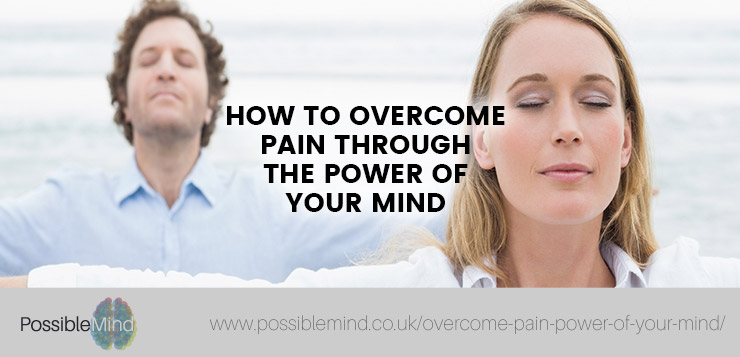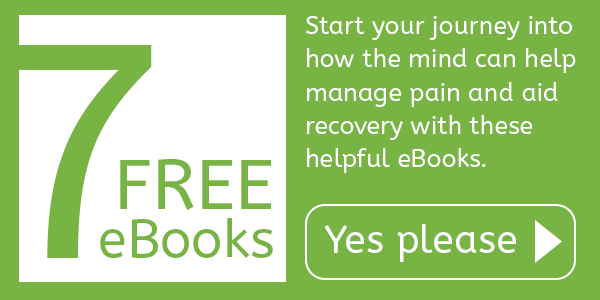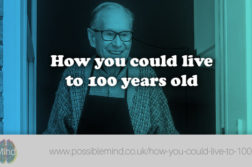Learn how mastering ‘mental movies’ can affect your experience of pain, so you can gain some long-awaited relief.
How do you live with ongoing pain?
Misery, exhaustion, feeling depressed, anxiety, restrictions and desperation. These are just a few words that I have heard from people who are living with painful conditions. We all have some aches and pains from time to time, where a small amount of medical relief, exercises, physiotherapy, or massage helps us manage until we feel better.
However, there are many people who have chronic or acute pain on a daily basis, and for prolonged periods of their lives. Medication can help in some cases but for some it is not enough, or the answer. I remember working with a parent whose young son had been badly burned in a fire, and every day he needed to have his dressings changed. The agonising daily screams from his young son, led him to my door for techniques that might be able to help reduce the pain in these most traumatic moments of removing the old dressings.
So what is happening in our brains when we experience pain?
Pain consists of feelings and sensations triggered in the nervous system, and it is the brain alone that decides whether something is a serious enough potential threat to warrant you getting some kind of internal warning.
We now know that the brain is responding to more than just the signals being sent to it by the danger receptors around the damaged area. Research from the University of South Australia’s ‘Body in Mind’ research group has shown that when individuals were touched with a cold piece of metal whilst being shown a red light, they described the experience as significantly more painful than those who were shown a blue light.
This shows us that the brain is influenced by different factors, which for us means that we can do so much more to help those that are suffering, as they can learn to respond advantageously to other factors.

The 4 factors contributing to the impact of pain
1. Your emotions. Your emotions can directly affect your experience of pain and perpetuate a cycle. Anxiety and pain are inseparable, with chronic pain often leading to depression.
2. Your previous experience, or association with pain. The experience of pain can be affected by childhood patterns, and other previous experiences. When you were young you may have been told ‘you’ll be fine’, and then distracted away from the painful experience, and so you may have something seriously painful happen to you, which is still locked within, that seeps into a present-day experience.
3. Your characteristics. Your ‘traits’ can contribute in determining your experience of pain. People with low motivation, and poor self-image, will usually perceive a painful stimulus as more severe.
4. Your perception of what pain signifies. What you expect from the pain makes a difference to how it is perceived. Do you view painful sensations as an annoying and unpleasant experience, or as your body’s way of telling you there is something important to attend to?
Just take a few moments and explore these 4 factors and how they influence your personal experience.

What can you do for relief?
There are many different mind-body techniques that can help with management, but here is something to get you started, with thinking and imagining pain differently.
Getting creative in your mind gets more of your brain cells active, and the more of your brain you are using the better. It’s just like your body … the more active it is, the healthier it will be. It will really help in your experience of pain and how to lessen it.
Begin to imagine what it will be like with no pain, or considerably less of the painful feelings. Imagine yourself as well as you can possibly be. Create a ‘mental movie’ of how this is going to be for you. See yourself, hear yourself, and feel yourself moving, doing more in your life, with less restrictions and with more physical freedom. See yourself at work, socialising, and at home. Really go for it in your imagination! Make the ‘movie’ bright, in high-definition, with the colours vibrant, and the sounds clear and crisp. Feel the relief of wellness tingling all through you.
This is just one of the ways that you can mentally shift your physical experience of pain, and there are others that can make a big difference. If you would like to find out more, take a look at The Book on Back Pain, which can be used for many different painful complaints, such as frozen shoulder, migraine, sciatica, and more.
Let me know how the method above works for you!
Tom.
To learn more please visit the site this article was originally published – lifelabs.psychologies.co.uk
If you like this post you will also enjoy:
- Power of Hope and Prayer In Improving Toothache Pain.
- How Mental Imagery Manages Pain.
- The Buddhist Monk Who Controlled Pain and Suffering.
- Virtual Reality Helps Distract Kids from Painful Medical Procedures.






